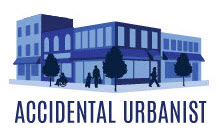If you care about Tulsa’s future, you care about public education. Having watched in awe as our state legislature convulsed to the end of yet another cringe-worthy session, one thing is certain: education funding is obviously not the top priority of those in control at the capitol.
So what can be done? Let’s talk about what we can achieve at the local level, without ever taking a trip down the turnpike.
If you look at the Tulsa Public Schools budget, you’ll notice that, while state funding is certainly important, TPS actually receives slightly more revenue from local property taxes than we do from the state. In the most recent Budget and Finance Plan for the 2015-16 school year, ad valorem taxes contributed $157,205,576 to total appropriated funds, compared to $155,921,101 from the state.
What this means is that that every residential and commercial property in town generates tax dollars that benefit public schools. The higher the value of the improvements on your land, the more you pay in taxes.
If that makes you cranky, remember this: public investment in roads, water lines, sewer systems, police, fire fighters, and an educated workforce give value to your private land. Public investments act like fertilizer that allow private development to grow and prosper. In return, private entities are taxed on the value of their property to help fund critical community needs like public education, technical training, libraries, the Tulsa County Health Department, and county government.
This is the handshake of community: everyone contributes and everyone benefits.
Each year, when you pay your property taxes, you are investing in the success of Tulsa and its citizens. You’re either paying it forward, or paying it back. Either way, cheers to you!
But back to our underfunded public schools, and the grim realization that a 4-day school week is not outside the realm of possibility in our near future.
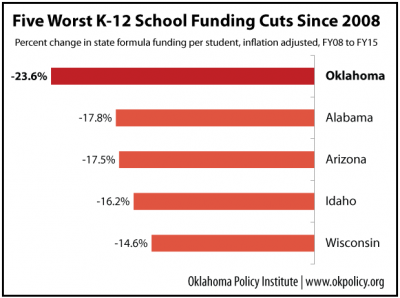
There’s Reason for Hope
Despite this shocking statement, I remain optimistic about the future of education funding. Tulsa has an ace up its sleeve that we’ve ignored for more than half a century, and it’s time we played that card. I’m talking about the land on which our city is built, and the fact that we have not come close to maximizing its value. (Don’t worry: I am NOT talking about turning park land into shopping centers!)
For clarification, let’s pay a visit to El Guapo’s Cantina.
In case you don’t know, El Guapo’s is one of several homegrown hits created by local restauranteur Elliot Nelson and The McNellie’s Group. It’s a Mexican restaurant that contributed to the rebirth of downtown Tulsa while celebrating Taco Tuesdays, rooftop dining, and surprisingly potent margaritas. They have two locations: the original one downtown, and a new south Tulsa restaurant at 81st and Harvard.
As it turns out, these two locations can teach us a lot about Tulsa Public Schools’ bottom line.
Doing the Math
First, we have El Guapo’s downtown, located on the southwest corner of 1st and Elgin. Built in 1912, this building occupies a typical 25 x 100 downtown lot, filling the entire 2,500 square foot parcel with a two-story building and a cool rooftop patio. According to the tax assessor’s website, the building contains 5,000 square feet of air conditioned space and pays annual property taxes of about $12,029. This means that every square foot of land associated with this modest building generates $4.81 in property taxes per year.
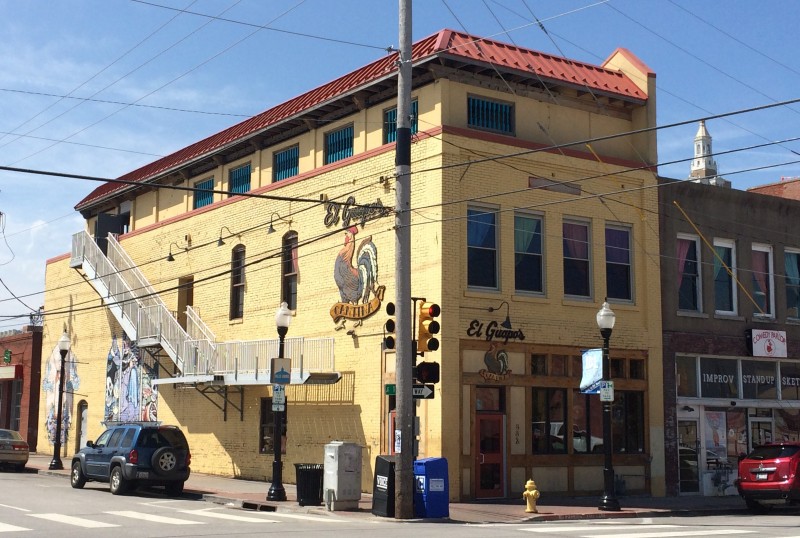
El Guapo’s downtown location – built in 1912
Next, we have the south Tulsa location near the southeast corner of 81st and Harvard. Built in 1979, this single-story building occupies 10,487 square feet of its 75,039 square-foot parcel. The remaining space (64,552 square feet) is dedicated to parking and landscaping. The entire parcel generates $15,899 in property tax revenue each year, which equals about $0.21 per square foot of land.
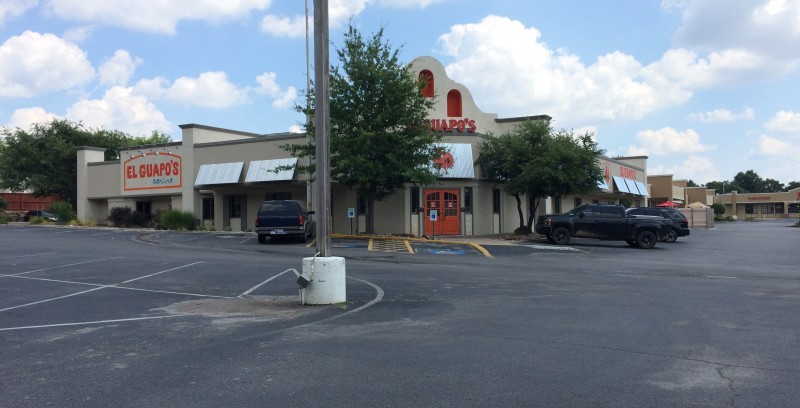
El Guapo’s south Tulsa location – built in 1979
To put this in perspective, El Guapo’s downtown generates approximately 23 times the amount of property taxes per square foot of land than the one located in a highly desirable south Tulsa location.
Have I got your attention yet? Educators… are you doing the math?
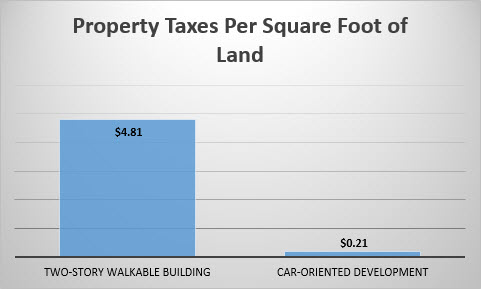
Sure, some of the difference is based on the relative value of downtown land, which can add a 40% premium over a similar parcel in the burbs. But that doesn’t explain the more than 2,000% premium on ad valorem taxes that we’re getting at the original El Guapo’s.
What really matters is how efficiently we’re using that space.
Walkable Places Generate More Taxes
Back in the day, people walked—and cities were built to accommodate this basic form of transportation. Blocks were smaller and parcels tended to be long and narrow, which allowed you to fit a lot of storefronts along a single block. Multi-story buildings were built up to the sidewalk, with doors and windows facing the street. All of this made it incredibly easy to walk from place to place, and people could live, work and shop within a compact area.
This development pattern was not only great for pedestrians; it was great for the city. The efficient use of land meant that it generated far more tax dollars than it cost to support. Tax revenue from these compact, multi-story buildings easily paid for the associated public services and infrastructure: roads, water, sewer, stormwater, police, fire, and—yes—schools.
Development patterns changed after World War II, when a combination of government policies (everything from local zoning codes to federal mortgage insurance regulations) incentivized suburban growth, while making old-fashioned, walkable places nearly impossible to build.
As the city spread out, zoning prevented us from mixing residential and commercial uses. People lived far from where they shopped and worked, driving became a necessity, and parking lots became the primary architectural feature of our city.
Too Much Parking Dilutes Revenues
Take another look at the two parcels our restaurants occupy. I’ve superimposed the downtown building onto the suburban shopping center to make it easy to visualize. (Scale is the same.)
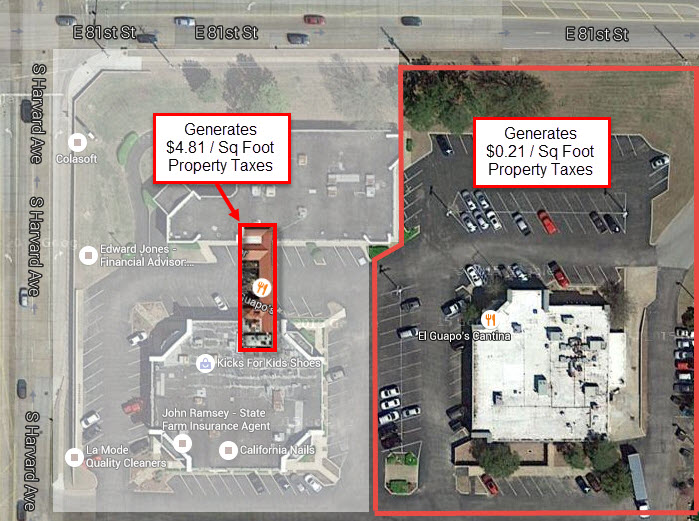
Comparison of traditional commercial building to modern shopping center.
El Guapo’s south includes dedicated parking for about 100 cars. El Guapo’s downtown includes space for zero. Amazingly, the downtown building is little more than one car-length wide. In fact, if the building were a parking lot, it could hold eleven cars.
I’ll let that soak in for a moment. Eleven cars.
In downtown Tulsa, there are no requirements to provide dedicated off-street parking. Instead, customers who drive rely upon hundreds of available parallel-parking spaces, nearby parking garages and shared parking lots. A growing population of downtown residents walk to dinner, and more and more people are choosing to bike. The building is also located close to several transit routes. This is a much more efficient system that allows people to choose their mode of transportation. At the same time, the market determines how much parking is needed, and includes the flexibility to allow spaces to be utilized both night and day by different users.
In the suburban model, every “use” provides its own dedicated off-street parking. Major streets are designed for fast moving vehicles, which doesn’t allow for on-street parking. And the buildings themselves are designed to be accessed solely by automobile. They are built on huge parcels of land, pushed back away from the street, and separated from the sidewalk by expansive parking lots.
This is great if you want to drive, but unfortunately, this single-purpose design limits our ability to utilize modes of transportation that would allow us to maximize the value of our land—and, thus, our tax revenues.
If You Care About Education Funding, You Should Care About Walkable Places
Because El Guapo’s downtown has two floors and a rooftop balcony, it functions as a 3-story building. It essentially occupies 300% of the land it sits on. Because the suburban site is a single-story building surrounded by parking, it occupies 14% of the available land. This makes a big difference to the tax assessor.
Which is why it should matter to you.
If you live in the Tulsa Public School district, about 50% of your property taxes go to support your local K-12 schools. Thus, if we want to raise an additional $50 million dollars for Tulsa Public Schools through ad valorem taxes, we would need to add about $100 million in taxable value to the land within our school district’s boundaries.
As shown above, the car-centric model of commercial development yields about $0.21 of property taxes per square foot of land, while an old-fashioned, walkable, two-story building generates about $4.81 per square foot. If we continue building our city like we did at 81st and Harvard, it would take 17 square miles of new development to increase our TPS budget by $50 million. However, it would only take ¾ of a square mile of dense, traditional, walkable buildings to achieve the same $50 million increase. (And that’s only considering 2-story buildings. Now imagine the multiplier if we built 3-story buildings!)
Think about that. Everyone can picture a square mile, because Tulsa is laid out on a grid. For example, 17 square miles would cover everything from 11th to 51st and Peoria to Sheridan, plus one more square mile thrown in for good measure. By contrast, three quarters of a square mile can be envisioned as 4th to 11th and Peoria to Delaware Ave.
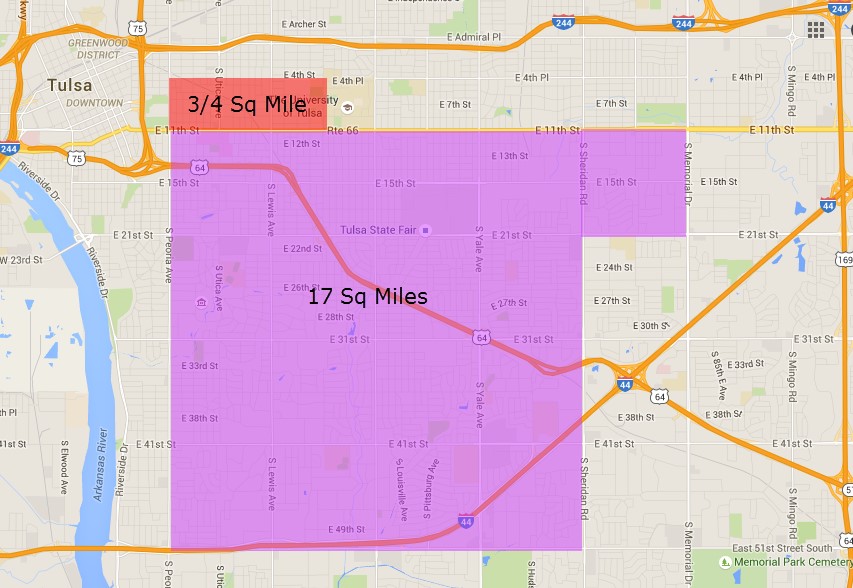
The amount of new land required to add $50 million to the education budget. Red shows traditional, walkable development. Purple shows car-oriented development.
Which option seems more realistic?
If you add up all the empty lots and under-utilized parcels of land in Tulsa, it’s easy to envision adding ¾ of a square mile of old-fashioned, high-quality, walkable infill throughout our city. Adding 17 square miles of car-centric development? Not so much.
We Need More Walkable, Bikeable, Transit-Friendly Places
If we want to solve our education budget crisis, the answer doesn’t lie solely in Oklahoma City. In fact, it’s right here in Tulsa, literally at our feet.
Building places that are conducive for walking, biking and transit is not just a good idea because people love them. It’s a moral imperative. Too much asphalt dilutes the value of land, and puts our schools in the red. A return to the traditional development patterns of the past will be the key to Tulsa’s future.
Some Good Things Are Already Happening.
For the first time in decades, Tulsa’s updated zoning code allows the possibility to create traditional, mixed-use, walkable places. In approving the recent Vision initiative, voters also supported a dedicated source of funding for transit. There’s also growing support for protected bike lanes and improved pedestrian infrastructure, along with a surge in ride share programs like Uber and Lyft. All of these are critical elements that will allow Tulsa to grow and increase our tax base without the downside of inefficient, car-centric development patterns.
But the status quo is a powerful force that will continue building wasteful sprawl unless we fight for change.
So whenever you see a vast, underutilized parking lot, you are looking at Tulsa’s future. Either we will continue to squander this land and the chance to fully fund public education, or we will return to our traditional roots, and build places that are great for people–and our schools’ bottom line.
by Sarah Kobos
